Put a bunch of academics, researchers, engineers, and golf coaches at a University presenting research on golf and what do you get? The World Scientific Congress of Golf held this year at the home of golf in St Andrews, Scotland.
I was lucky enough to spend the week in St. Andrews attending as many sessions as possible while trying to get a good grasp on where the research is currently at and where it’s headed.
A little about the Congress
This was a return of sorts as the first event was held in 1990 at St. Andrews University led by Alastair Cochran (author of Search for the Perfect Swing) and Martin Farrally.
The mission of the WSCG is to bring together researchers, professionals, and interested golfers in the areas of The Golfer, The Golf Course, and Equipment and Technology.
You might recognize the current chair of the Congress, Dr. Debbie Crews from past episodes and founder of Opti International. However, this was her last year as chair, having held that position for the last 10 years! She did a fantastic job pulling together an amazing group of presenters and creating an event that was really enjoyable to attend and completely fascinating.
I wanted to share a few things that stood out to me and give you a quick look at some of the research.
Quiet eye might not be all it’s thought to be
We recently did an episode sharing some research on Quiet Eye and putting. It’s a concept that a fair amount of research has been done on, but when I sat in on a presentation from Laura Carey she presented some valid arguments to take another look at the concept.
In her study they attempted to create a representative task (previous studies haven’t taken this into account) to what golfers face on the course, putts of different lengths and slope (8, 15, and 25 feet) and what they found was surprising.
The data revealed considerable within-participant variability in both QE and performance measures. The within variability of participants in putts holed and QE highlight that within experienced amateur and professional golfers there is inconsistency within their putting accuracy and their routines. (Laura Carey, Robin Jackson, Malcolm Fairweather, Joe Causer & Mark Williams, 2016)
What they found was a lot of variation and variability with the duration of Quiet Eye amongst golfers. At this point it seems we don’t understand why it works or why it happens.
The takeaway? Take a listen and learn about the concept but understand that you need to test it yourself and see what works best for you.
Gaze Behaviors of Elite Golfers: Does Task Difficulty Influence Quiet Eye?
Laura Carey, Robin Jackson, Malcolm Fairweather, Joe Causer & Mark Williams
There’s more to the concept of “external focus” than you think
We’ve done a few pieces of content here at the Golf Science Lab talking about Internal vs External Focus. The concept being that an external focus helps to make movements more fluid and improve performance + learning.
Dr. Noel Rousseau presented some VERY interesting research that might open up some new possibilities. In a study he did he created an “intervention” of sorts walking golfers through a pre-shot routine helping them limit conscious processing (swing thoughts). You might think that if you had “no thoughts” during a swing you would be able to perform better.
What he found is that’s not true for everyone…
A high ‘verbaliser’ group deteriorated while ‘visualisers’ showed improvement during restricted conscious processing trials (Noel Rousseau, Matthew Bridge & Ian Boardley, 2016)
What I took away is there’s more to the conversation than just internal vs external. The reality is that there has been some incredible golf played with an internal focus… why is that? Well there’s variability between us and what works for you might not work for me.
I’m really interested in Dr. Noel’s work and looking forward to learning more about these concepts.
Conscious Processing of a Complex Motor Skill: An Investigation Into the Automaticity Paradigm of Full Golf Swing Execution
Noel Rousseau, Matthew Bridge & Ian Boardley
The Irish are working hard on their player development
There were two really good presentations looking at the development of golfers in Ireland. The first by Jussi Pitkanen talking about the transition from amateur to professional.
The most important need for these amateur golfers was social and psychological support, followed by financial support, and the need to be highly self-motivated and driven to succeed.
One fact that stood out from Jussi’s study was that, the players that received the most funding and support during their amateur careers have the lower world rankings after turning pro.
I heard more than a few times at this congress from player development experts that the emphasis needs to be on developing great PEOPLE and not just winning. There needs to be more topics talked about other than performance, scores, and winning that help to equip athletes for life beyond sports.
Elite Irish Golfers’ Experiences of Transition From Amateur To Professional
Jussi Pitkanen & Martin Toms
There’s a lot of very practical and useful research going on at Pinehurst.
Dr. Bob Christina and Eric Alpenfels from Pinehurst went about busting a number of myths with their research. Here are a couple of the most interesting ones that will probably have an impact on your game the next time you head out to the course.
Aim Small Miss Small? – BUSTED
In the testing they did this didn’t hold true… in fact the opposite appeared to have the most positive impacts with driving and long putting.
Lower Tee Height = More Accuracy? – BUSTED
Not only do golfers hit it longer but also more accurately when teeing the ball up higher. This again goes against conventional wisdom but showed to be true with their testing.
Use the grip size that feels best? – BUSTED
Most people choose their grip size by what feels best or based on some type of fitting chart. Through testing 23/24 golfers found they had their best performance with a grip other than what they were fit for based on measurements.
The reality is that selecting the right grip size has less to do with preference or size of hands and has more to do with the type of shot and performance.
With all of these concepts. Go do some testing and see what has a positive impact on your performance.
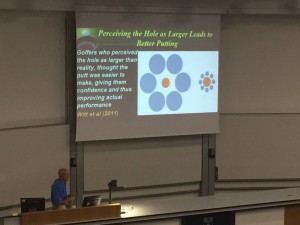
The Pinehurst Studies: Discoveries That Defy Conventional Wisdom
Bob Christina & Eric Alpenfels
Aim Small, Miss Small: To What Extent Does it Work?
Bob Christina & Eric Alpenfels
Great Info from Golf Coaches
I attended two presentations from some great coaches…
A Framework for Artful Coaching: Infusing the Lesson Tee with Learner Optimized Activities – Corey Lundberg and Matt Wilson
How do you actually implement these research based learning concepts into the lesson tee as a coach and instructor? That is what Matt and Corey covered so well.
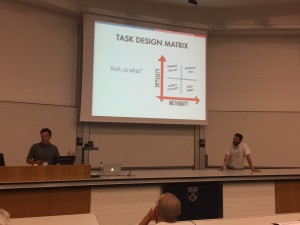
I love this framework and in fact they have an entire article outlining the concept you can go through here.
The Scottish High Performance Golf Project – Graeme McDowall and Peter Arnott
Amateur golf is characterized by stability and professional golf is characterized by instability.
How do you create training that helps golfers improve skills that show up under pressure when it matters on the golf course? Graeme and Peter are looking at helping players use constraint based coaching environments.
We’ve done two amazing episodes with these guys in the past. Highly recommend checking those out.
How Good Golfers Get Good
Constraint Based Learning Environments
Speed Set Testing – Application of the Scientific Method to Club Fitting – Liam Mucklow
What would happen if you applied the scientific method to club fitting? A valid question if you ask me! Liam got everyone out onto the St. Andrews driving range giving a hands on demonstration through the method he takes people for fitting clubs.
Fantastic method I recommend looking into more.
The Brain and Emotions Control Learning and Performance – Michael Hebron & Stephen Yazulla
Michael always has some interesting insights to share on learning and the brain and his workshop was no different. I love the premises he shared…
1) To be mindful that your words and attitudes create emotional responses in your students during a lesson, particularly those attempts that would be considered to be “failed” outcomes.
2) To understand that these emotional responses are reflected in the hormonal environment of the brain, which in turn affect subsequent actions.
3) To coach in a manner that takes these changes in the brain into account so as to create a learning environment that enhances learning and performance rather than suppressing them.
It was a fantastic week and one that I came away with a lot of new knowledge and great experiences from. Watch for the all the abstracts from the Congress which will be published mid August in the International Journal of Golf Science supplemental issue.
At the closing banquet it was announced that the 2018 congress will be held in Vancouver, Canada. Hopefully we’ll see some of you there!
The post 2016 World Scientific Congress of Golf Review appeared first on Golf Science Lab.
































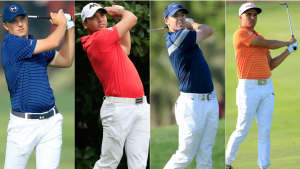 Learning has played a major role in the existence of the human race, and has become increasingly popular amongst golf coaches, and athletes in the 21st century. The capability to learn, and continuously enhance human performance is critical to competing at the highest professional level, and ultimately earning a living, and surviving out on the professional circuits (PGA Tour, European Tour, LPGA Tour, LET, and many more professional tours).
Learning has played a major role in the existence of the human race, and has become increasingly popular amongst golf coaches, and athletes in the 21st century. The capability to learn, and continuously enhance human performance is critical to competing at the highest professional level, and ultimately earning a living, and surviving out on the professional circuits (PGA Tour, European Tour, LPGA Tour, LET, and many more professional tours). 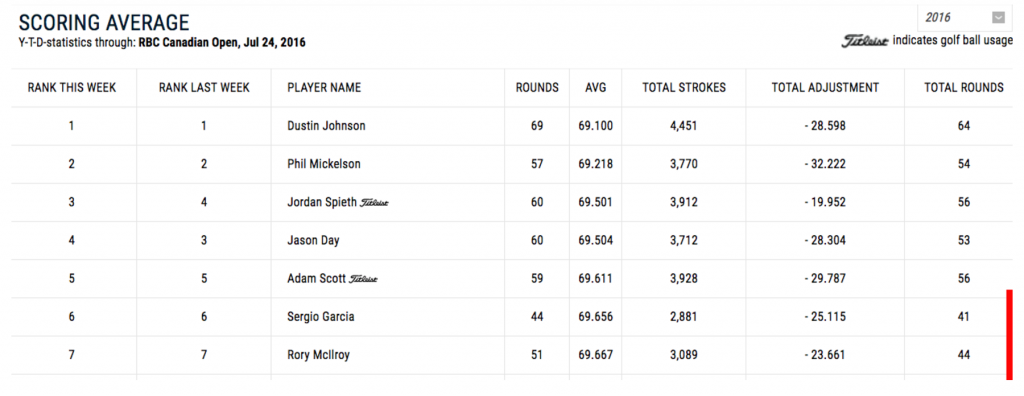
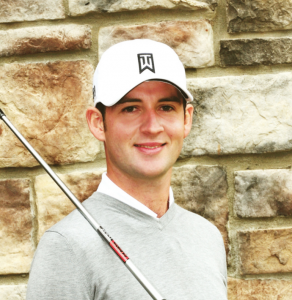 Originally from the United Kingdom, Matthew developed his knowledge through extensive study in sports and exercise performance, sports and exercise science, and the PGA (Professional Golfers Association) of Great Britain. Whilst in the U.K. Matthew Co-founded ‘Leap Golf UK’, with Iain Highfield, where he worked with Ladies European Tour, Euro-pro and mini tour professionals.
Originally from the United Kingdom, Matthew developed his knowledge through extensive study in sports and exercise performance, sports and exercise science, and the PGA (Professional Golfers Association) of Great Britain. Whilst in the U.K. Matthew Co-founded ‘Leap Golf UK’, with Iain Highfield, where he worked with Ladies European Tour, Euro-pro and mini tour professionals.  Cordie Walker has spent the last four years working with golf instructors, helping inform thousands on business and teaching best practices (if you’re a coach or instructor, check out golfinthelifeof.com).
Cordie Walker has spent the last four years working with golf instructors, helping inform thousands on business and teaching best practices (if you’re a coach or instructor, check out golfinthelifeof.com).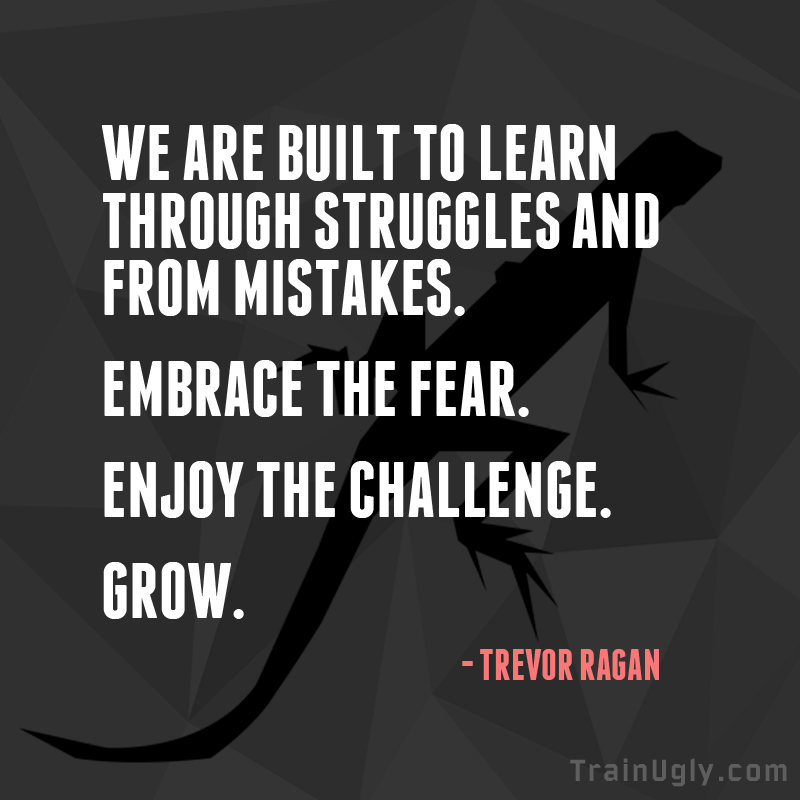

 Trevor Ragan has dedicated himself to researching how learning best occurs. However, he has noticed that there is a large gap between the best practices found in the research and common coaching methods.
Trevor Ragan has dedicated himself to researching how learning best occurs. However, he has noticed that there is a large gap between the best practices found in the research and common coaching methods.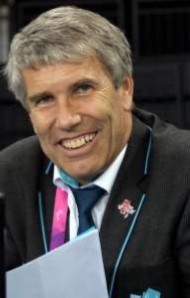 Since 1985 John has been working for the National Governing Body of the sport, USA Volleyball (USAV), now as Director of Sport Development. He currently serves as the staff liaison for Disabled Programs, USA Deaflympic Teams, Starlings USA, National Parks and Recreation Assoc., the YMCA and over 30 other Affiliated Organizations working with USAV. He is Secretary of the NORCECA Technical and Coaches Commission, and Director of Development for World ParaVolley. He was Team Leader for the 2000 USA Olympic Beach Volleyball Teams in Sydney, which brought home one gold medal, and for the 2004 USA Paralympic Women’s Sitting Volleyball Team in Athens, which came home with the bronze medal. In 1995, Volleyball Magazine’s special Centennial issue named him one of the 50 most important people in the sport in the past 100 years. In 2013 the American Volleyball Coaches Association inducted him as their 60th member of the AVCA Coaches Hall of Fame.
Since 1985 John has been working for the National Governing Body of the sport, USA Volleyball (USAV), now as Director of Sport Development. He currently serves as the staff liaison for Disabled Programs, USA Deaflympic Teams, Starlings USA, National Parks and Recreation Assoc., the YMCA and over 30 other Affiliated Organizations working with USAV. He is Secretary of the NORCECA Technical and Coaches Commission, and Director of Development for World ParaVolley. He was Team Leader for the 2000 USA Olympic Beach Volleyball Teams in Sydney, which brought home one gold medal, and for the 2004 USA Paralympic Women’s Sitting Volleyball Team in Athens, which came home with the bronze medal. In 1995, Volleyball Magazine’s special Centennial issue named him one of the 50 most important people in the sport in the past 100 years. In 2013 the American Volleyball Coaches Association inducted him as their 60th member of the AVCA Coaches Hall of Fame.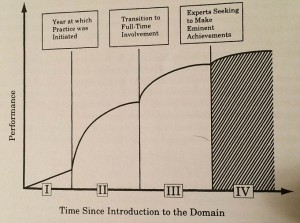













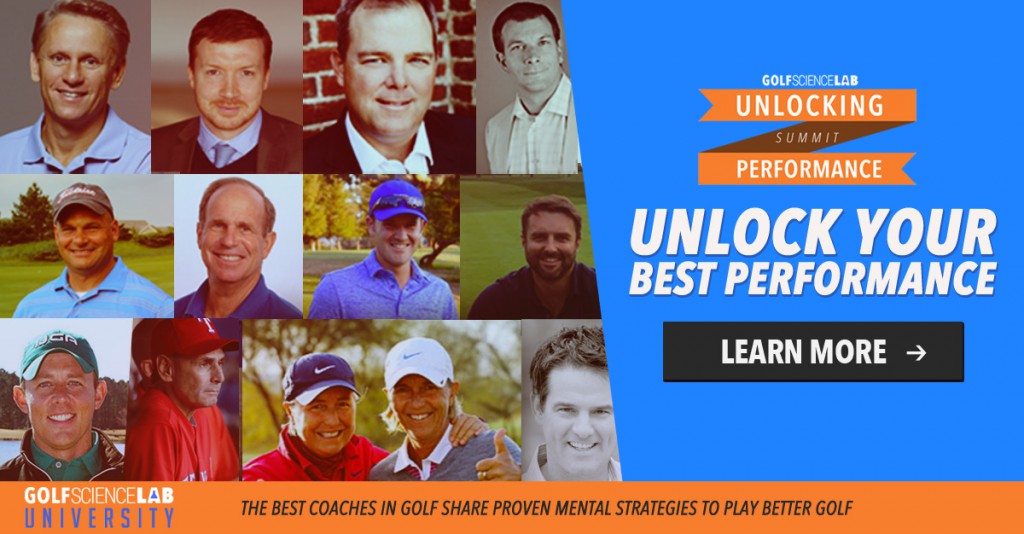











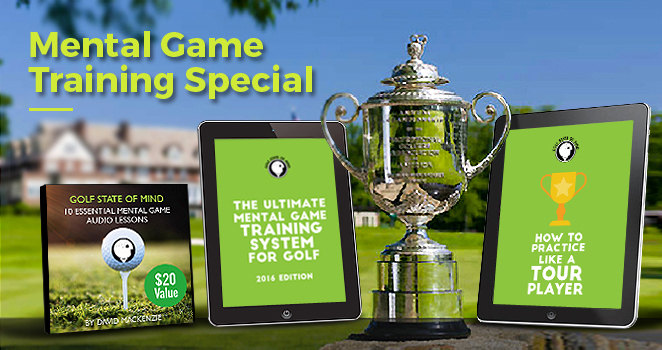












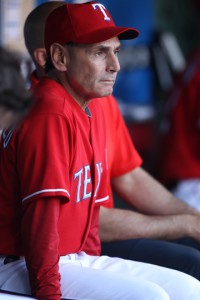 Dr. Fran Pirozzolo is a licensed consulting psychologist who has worked with many of the world’s top athletes and is currently the Mental Skills Coach for the Texas Rangers Baseball Club. He also has a private practice consulting business. in his home town of The Woodlands, Texas just north of Houston.
Dr. Fran Pirozzolo is a licensed consulting psychologist who has worked with many of the world’s top athletes and is currently the Mental Skills Coach for the Texas Rangers Baseball Club. He also has a private practice consulting business. in his home town of The Woodlands, Texas just north of Houston. Trillium Rose is the Head Director of Instruction at Woodmont Country Club in Rockville, Maryland. An innovator and life-long learner, her knowledge of teacher effectiveness, mechanics and practice training have proven highly successful. She has improved the games of over 1,000 individuals who rely on her cutting-edge expertise, and honest, straight- forward approach.
Trillium Rose is the Head Director of Instruction at Woodmont Country Club in Rockville, Maryland. An innovator and life-long learner, her knowledge of teacher effectiveness, mechanics and practice training have proven highly successful. She has improved the games of over 1,000 individuals who rely on her cutting-edge expertise, and honest, straight- forward approach.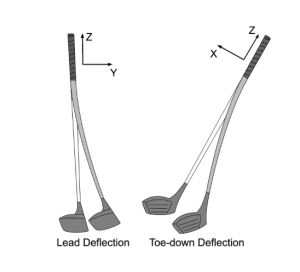 During the swing flex in a shaft causes deflection. The two aspects of that are lead and toe down deflection, so the club is drooping and leading relative to the grip (see graphic).
During the swing flex in a shaft causes deflection. The two aspects of that are lead and toe down deflection, so the club is drooping and leading relative to the grip (see graphic).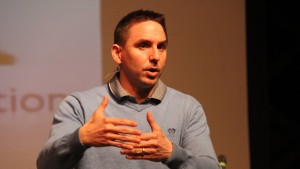 Dr. MacKenzie completed a PhD in Sports Biomechanics at the University of Saskatchewan, which focused on 3D forward dynamics simulation of the golf swing.
Dr. MacKenzie completed a PhD in Sports Biomechanics at the University of Saskatchewan, which focused on 3D forward dynamics simulation of the golf swing. Liam joined the PGA of Canada in 2001, one year prior to graduating from the University of Alberta in 2002 with a Bachelor’s of Physical Education. At University Liam was on the varsity golf team, an All Star volleyball player and a medalist in badminton.
Liam joined the PGA of Canada in 2001, one year prior to graduating from the University of Alberta in 2002 with a Bachelor’s of Physical Education. At University Liam was on the varsity golf team, an All Star volleyball player and a medalist in badminton.
 There are attributes to putters that give the perception of being either open or closed when looking at alignment.
There are attributes to putters that give the perception of being either open or closed when looking at alignment. Austie Rollinson is the Principal Designer for Odyssey and is a senior member of the Golf Club Innovation & Development team. His primary responsibility is leading the creation of all of the company’s products under the Odyssey brand. Austie has had this responsibility since Callaway Golf purchased Odyssey Golf in 1997.
Austie Rollinson is the Principal Designer for Odyssey and is a senior member of the Golf Club Innovation & Development team. His primary responsibility is leading the creation of all of the company’s products under the Odyssey brand. Austie has had this responsibility since Callaway Golf purchased Odyssey Golf in 1997.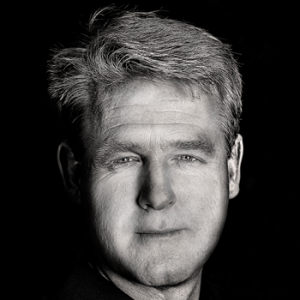 David serves as the company’s visionary leader, working tirelessly to innovate and develop ground-breaking products that shift the thinking of the golf equipment industry. His extensive club design and engineering expertise allows Edel Golf to continually push the envelope of equipment technology.
David serves as the company’s visionary leader, working tirelessly to innovate and develop ground-breaking products that shift the thinking of the golf equipment industry. His extensive club design and engineering expertise allows Edel Golf to continually push the envelope of equipment technology.
 Timothy D. Lee, PhD, is a professor in the department of kinesiology at McMaster University in Hamilton, Ontario, Canada. He has published extensively in motor behavior and psychology journals since 1979. More recently, he has contributed as an editor to Journal of Motor Behavior and Research Quarterly for Exercise and Sport and as an editorial board member for Psychological Review.
Timothy D. Lee, PhD, is a professor in the department of kinesiology at McMaster University in Hamilton, Ontario, Canada. He has published extensively in motor behavior and psychology journals since 1979. More recently, he has contributed as an editor to Journal of Motor Behavior and Research Quarterly for Exercise and Sport and as an editorial board member for Psychological Review.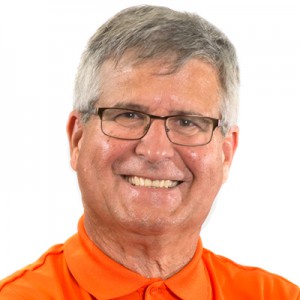
 With the M1 driver, you have a 15 gram weight in the front track and a 10 gram weight in the back track. When you move those weights, you’re moving the center of gravity which ultimately impacts the ball flight of that club.
With the M1 driver, you have a 15 gram weight in the front track and a 10 gram weight in the back track. When you move those weights, you’re moving the center of gravity which ultimately impacts the ball flight of that club. Paul is the Vice President of Engineering at Ping, coordinating a department responsible for club design, development, innovation and testing. He moved there in 2005 after completing a PhD studying Solar Flares in the Mathematics Department at St Andrews University, Scotland.
Paul is the Vice President of Engineering at Ping, coordinating a department responsible for club design, development, innovation and testing. He moved there in 2005 after completing a PhD studying Solar Flares in the Mathematics Department at St Andrews University, Scotland. Brian Bazzel is the Senior Director of Product Creation for TaylorMade with a focus on metal woods.
Brian Bazzel is the Senior Director of Product Creation for TaylorMade with a focus on metal woods.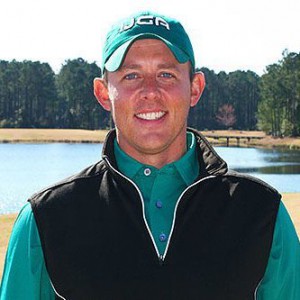 Iain is the Director of Mental Performance at the Bishops Gate Golf Academy and the International Junior Golf Academy. Qualified in Economics and Business Psychology as well as Sports & Exercise Psychology, Iain began to apply his coaching models to junior golf in 2009. In 2011 he Co-founded Leap Golf UK and worked with elite juniors as well as Ladies European Tour, Euro-Pro, Challenge Tour and European Tour professionals.
Iain is the Director of Mental Performance at the Bishops Gate Golf Academy and the International Junior Golf Academy. Qualified in Economics and Business Psychology as well as Sports & Exercise Psychology, Iain began to apply his coaching models to junior golf in 2009. In 2011 he Co-founded Leap Golf UK and worked with elite juniors as well as Ladies European Tour, Euro-Pro, Challenge Tour and European Tour professionals.







